Hamamelis species
witch hazels
H. mollis Oliv.,
H. japonica Siebold & Zucc.,
H. viginiana L.,
H. x intermedia Rehder)
Hamamelis (family Hamamelidaceae) is a genus of 5 species and many garden hybrids. The three species commonly found in cultivation are H. japonica Japanese witch hazel (from Japan), H. mollis Chinese witch hazel and H. virginiana from Eastern North America.
Most of the cultivated witch hazels that we grow in our gardens today are varieties of the hybrid witch hazel, H. x intermedia, of parent species H. mollis and H. japonica, usually grafted on to rootstock of H. virginiana. H. mollis, H. japonica and H. x intermedia flower in mid-winter, usually coming into flower in Ireland in mid-January and continuing into February.
All the witch hazels have flowers with four distinctive strap-shaped petals. Many are deliciously scented, and some, such as ‘Arnold Promise’ have good autumn colour. Mostly very hardy, they will withstand frost, snow and wind. Altogether, they are among the best and most spectacular winter-flowering shrubs or small trees for an Irish garden, and deserve to be more widely planted.
The North American witch hazel flowers in Autumn, from September to December. It is the commercial source of distilled witch hazel which is extracted from the twigs and bark and used to alleviate swelling of bruises and veins.
Belfast Botanic Gardens has a fine collection of winter flowering cultivars in a range of colours, from deep red ‘Ruby Glow’ to the orange hues of ‘Jelena’ and the beautiful pale yellow highly scented ‘Pallida’. There are several large bushes of North American witch hazel. These may have been planted or may derive from the root stocks of grafted plants, either way an interesting addition.

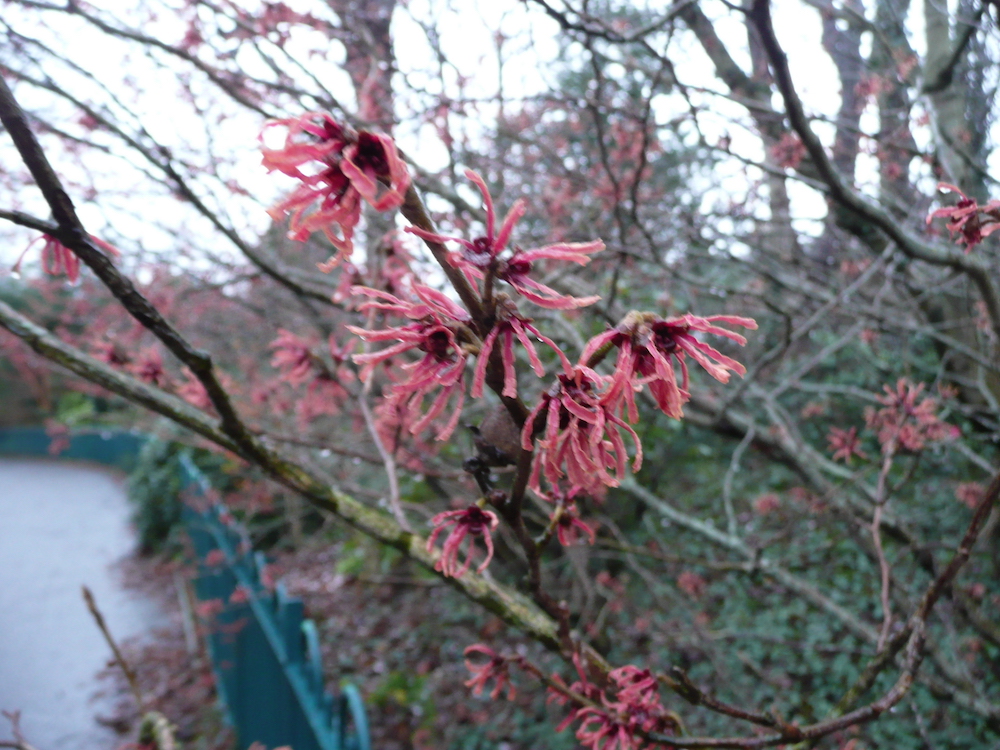
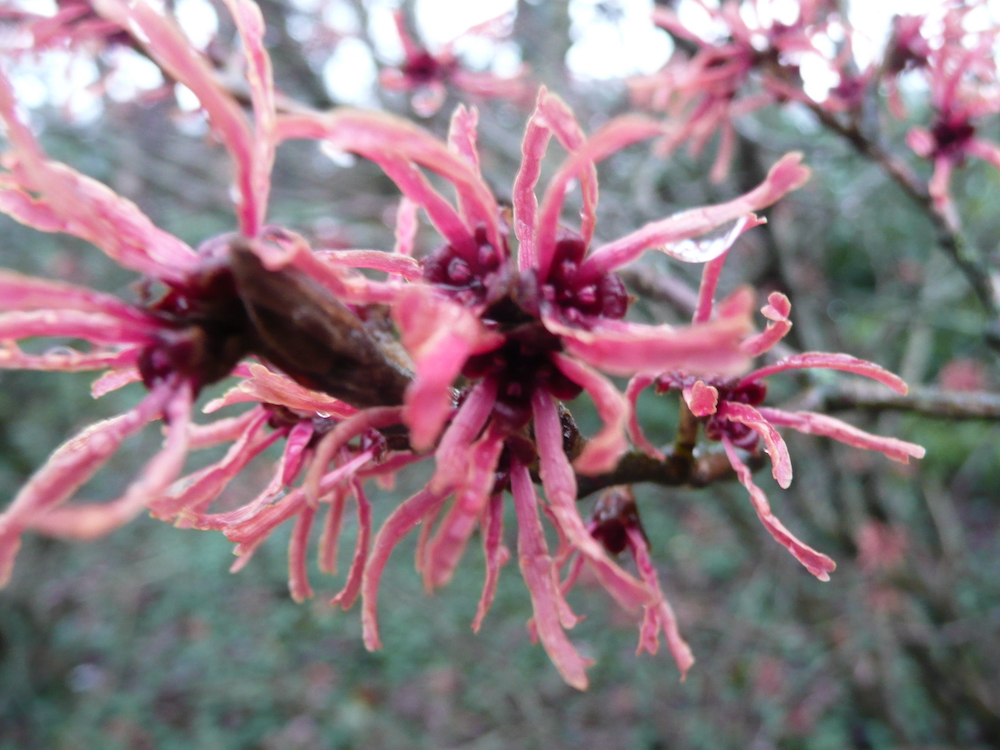
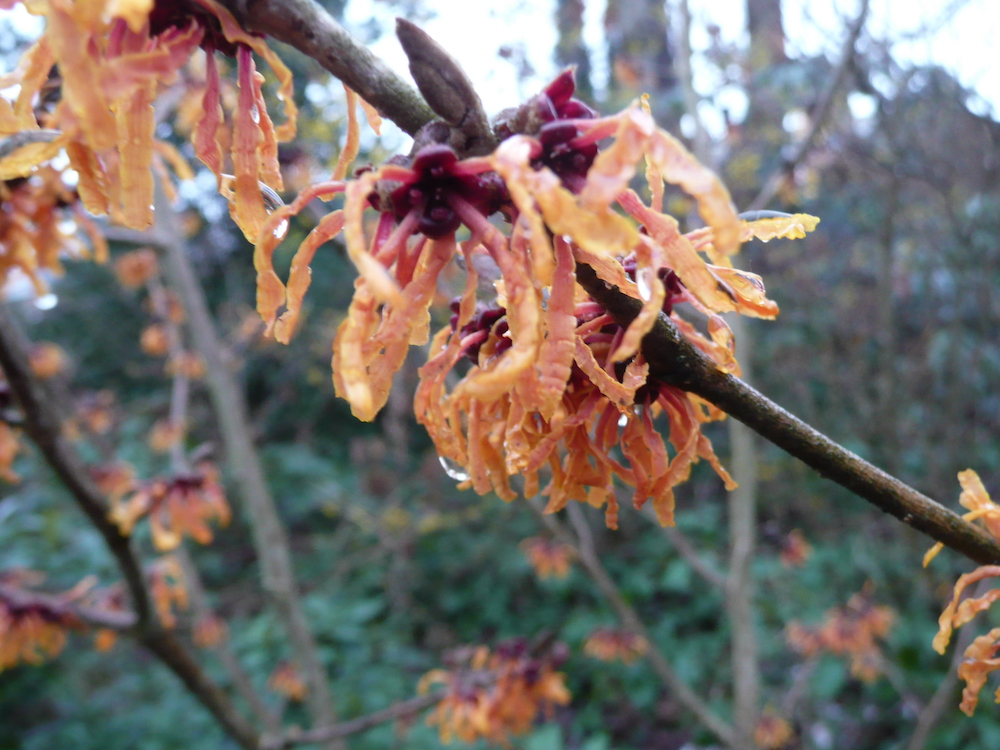
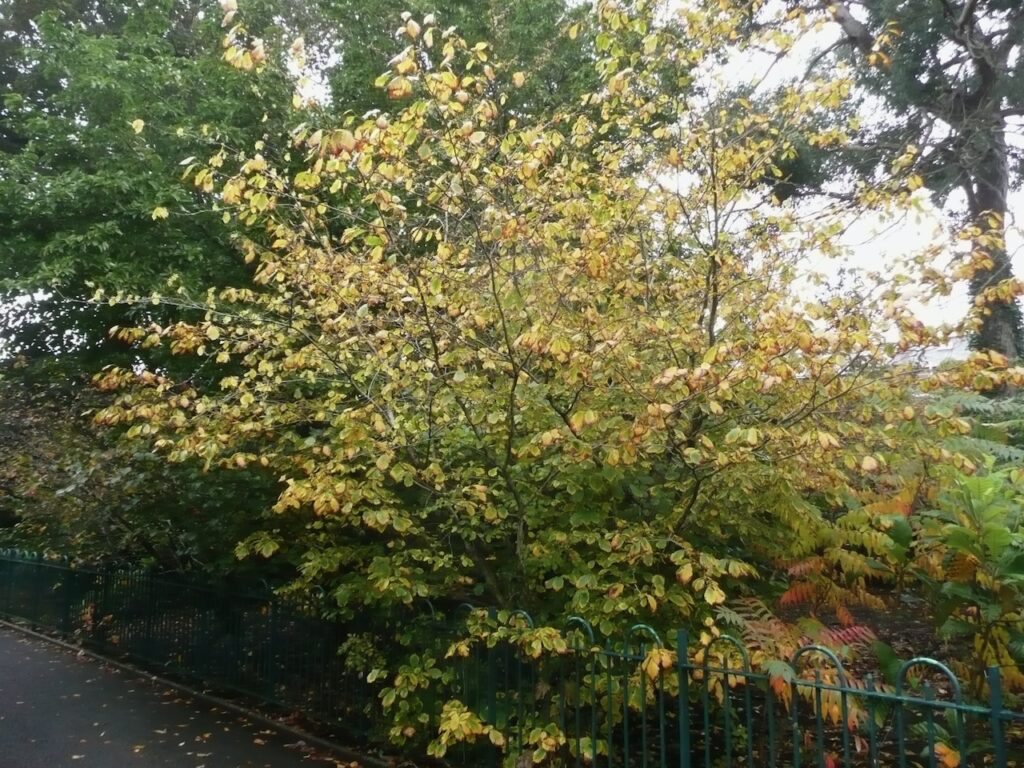
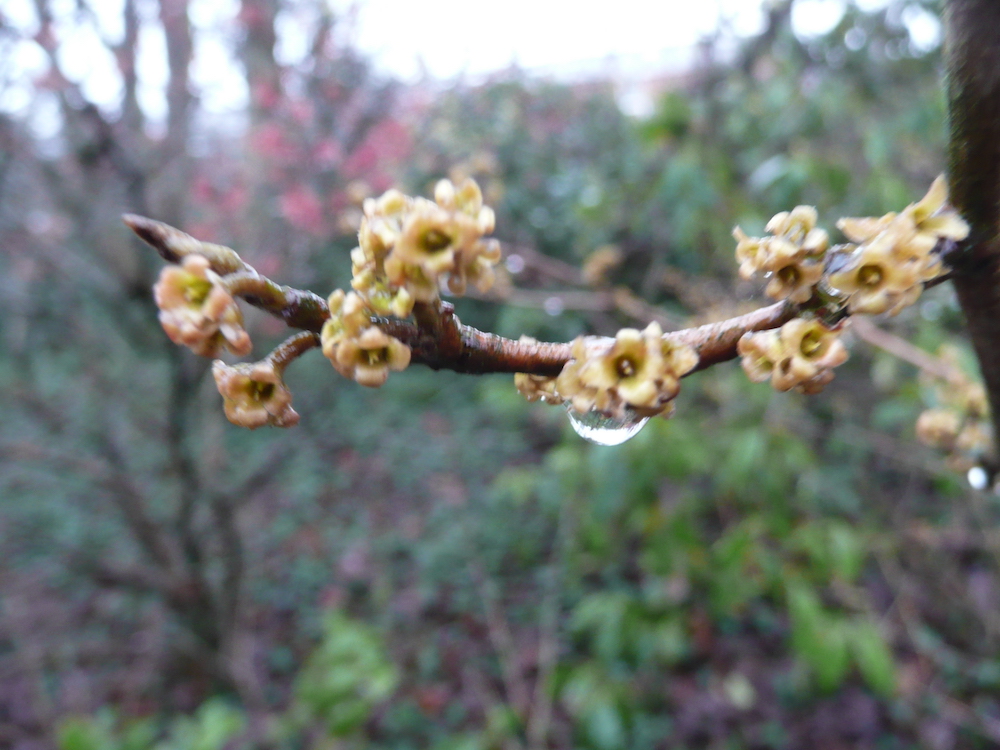
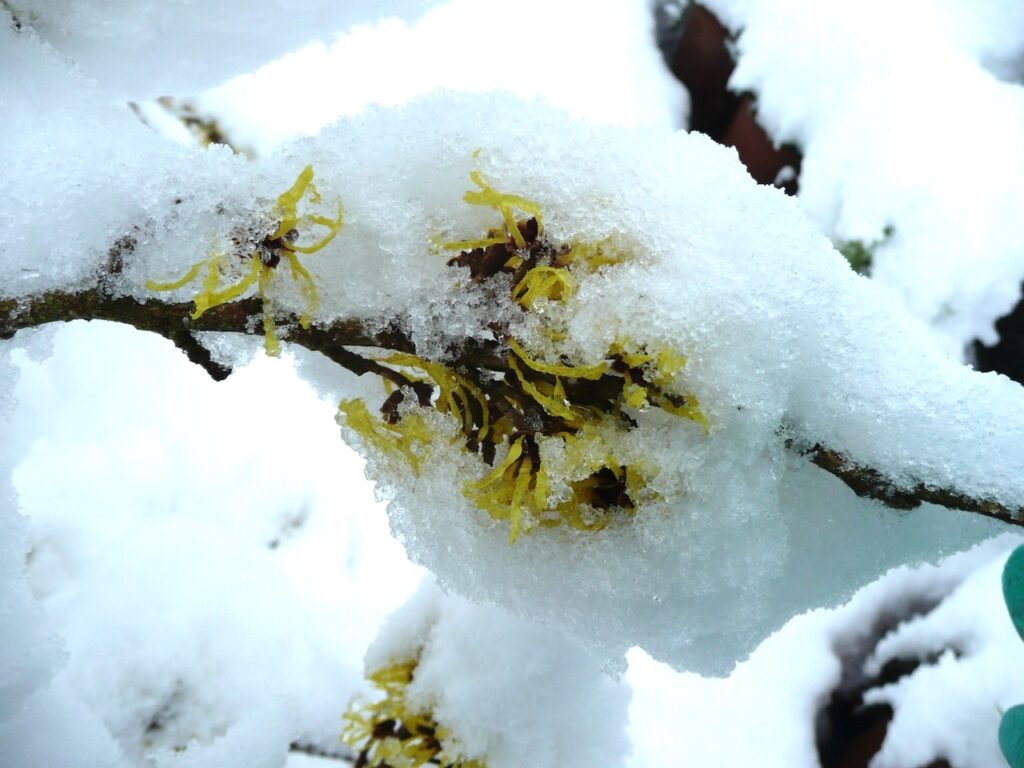
Photos taken in Belfast Botanic Gardens in 2013. Copyright: Friends of Belfast Botanic Gardens.
